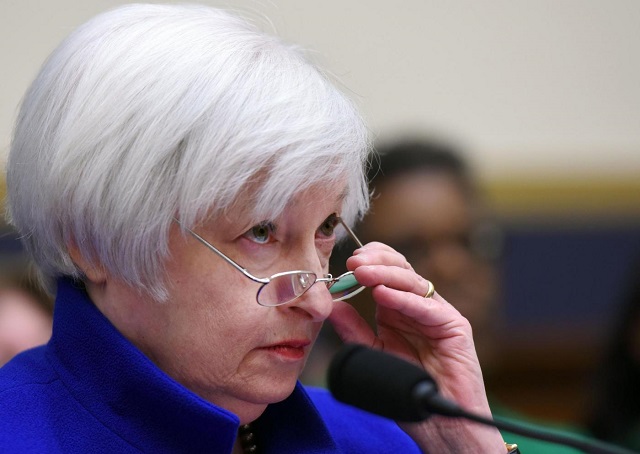Hawkish FOMC to trigger USD rally

The focus today is first on the US CPI release and then the Federal Open Market Committee meeting later. The market is looking for a core CPI reading of +2.2%, unchanged from the January reading. The post-global financial crisis high for a single month was 2.3% back in April, 2012.
"We see a higher risk of a more hawkish-than-expected FOMC meeting", says Saxo Bank's head of forex strategy, John J Hardy. "April is currently priced in at about 25%, if we get a hawkish stance from the Fed tonight, that could suddenly change the trajectory to a 75% chance", remarks Hardy. The Saxo Bank's head of forex strategy warns that the market is out of synch with the Fed on the chances of a rate move tonight assessing the chances of a move at "20-25%" compared to a consensus virtual dismissal at just 4%. "It is unlikely that we'll get a move tonight", he concedes, "but I am definitely looking for a hawkish lean from the Fed with supportive data like CPI at 2.2%." "There is two-way risk tonight and there could be a lot of volatility in and around the decision".
JPY crosses are back higher overnight as the Bank of Japan’s governor Kuroda indicated that the BoJ is capable of lowering rates as far as negative 0.50%. A visit from Nobel Laureate Joseph Stiglitz in Japan saw him discussing policy with Prime Minister Abe and Kuroda. He told Abe that Japan should not raise the sales tax next year and instead to focus on a possible inheritance tax and carbon tax and to stimulate the economy with fiscal policy rather than more monetary policy measures.
Sterling is weakening sharply again as the latest polls suggest supporters of the "Leave the EU" bloc are gaining and on the strong argument that those in favour of leaving are far more likely to get out and vote than those in favour of no change to policy. This could pressure sterling farther from here – particularly in GBPUSD today on a USD-positive reaction.
“A question for the longer term – argues Hardy – is whether this is a euro-negative development and what is the time scale of an eventual Brexit? Two years? Five? Ten? After the initial shock of a "Leave" vote, there could be indications of a long exit timeframe – highly likely – after everyone has panicked and put in place hedges and the Bank of England has possibly moved to defend the currency. And there could be a whopper of a mean reverting move in EURGBP from wherever it peaks. But let’s not get ahead ourselves on this”.
Comment by John Hardy, Saxo Bank's head of FX Strategy

